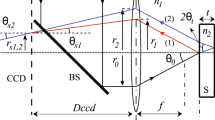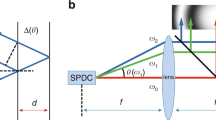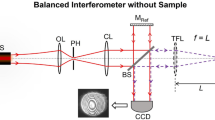Abstract
IN the Tolansky method for the measurement of the thickness of thin films by multiple beam interference we have used a narrow channel in the film rather than a sharp step1. The channel can be formed by gently drawing a needle across the film before the deposition of the reflecting over-layer. The technique is easily applied and has several advantages especially when the substrate is not optically flat as in the case of microscope slides.
This is a preview of subscription content, access via your institution
Access options
Subscribe to this journal
Receive 51 print issues and online access
$199.00 per year
only $3.90 per issue
Buy this article
- Purchase on Springer Link
- Instant access to full article PDF
Prices may be subject to local taxes which are calculated during checkout
Similar content being viewed by others
References
Scott, G. D., McLauchlan, T. A., and Sennett, R. S., J. App. Phys., 21, 843 (1950).
Weaver, C., and Benjamin, P., Nature, 182, 1149 (1958).
Scott, G. D., J. Opt. Soc. Amer., 48, 858 (1958).
Author information
Authors and Affiliations
Rights and permissions
About this article
Cite this article
SCOTT, G. Substrate Damage in Film Thickness Measurement by Beam Interferometry. Nature 184, 354–355 (1959). https://doi.org/10.1038/184354b0
Issue Date:
DOI: https://doi.org/10.1038/184354b0
Comments
By submitting a comment you agree to abide by our Terms and Community Guidelines. If you find something abusive or that does not comply with our terms or guidelines please flag it as inappropriate.



